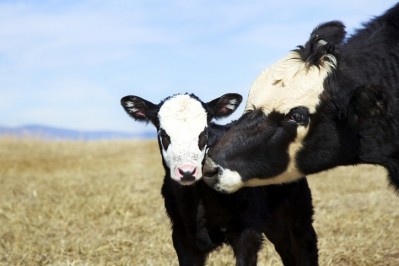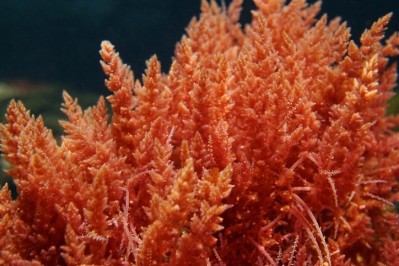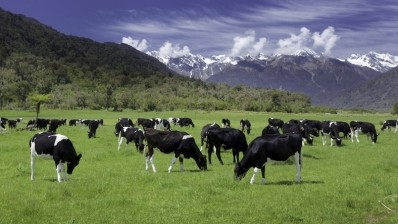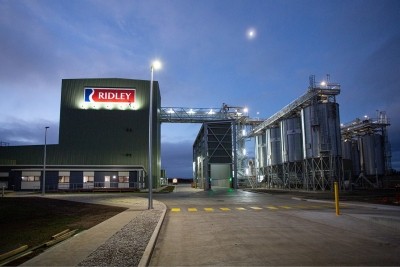Microbes to transform potato peel and grape skins into high value feed

The project will use Manaaki Whenua Landcare Research’s collection of microbial organisms to transform waste such as grape marc and potato skins and off-cuts into a palatable high energy, low protein feed.
University of Canterbury Environmental Science Professor Brett Robinson, who heads up the program, told FeedNavigator: “Manaaki Whenua has a collection of 20,000 species microbes from plants. The challenge is to select the microbial consortia that can transform these wastes into beneficial products. Not just any old microbes can do this – scientists are using machine learning, a type of Artificial Intelligence, to select microbes and test them using small devices before scaling up.”
In this way, the scientists are hoping to produce low protein feeds that can help to overcome the environmental issue of nitrogen leaching into waterways.
“In New Zealand, animals tend to have an excess of protein in feed, largely because our agricultural systems are driven by perennial rye grass. This is a problem because the excess protein is excreted as nitrogen. Also, our animals are mostly outdoors, which means their urine and feces isn’t collected, so we have a big issue with nitrate leaching. If we can produce a high energy, low protein feed from potato waste, for example, this will reduce the amount of nitrogen released by the animal into the environment,” explained Prof Robinson.
Condensed tannins contribute
It is not just the low protein concentrations of these food waste derived feeds that will help reduce nitrogen leaching, but also the high concentrations of bioactive chemicals such as condensed tannins, said Prof Robinson.
“Some of these waste sources contain compounds called condensed tannins which reduce the amount of nitrogen present in the urine of the animal. There are other health benefits for the animal too, such as reduced bloating,” he added.
This work is still at an early stage: Prof Robinson reported that Lincoln University, another partner in the project, has conducted trials in which animals were given the waste-derived feed, with encouraging results.
“We haven’t yet published the data and are looking to grow the program; we are trying to find investment to enable us to transform more waste. Between the institutes involved we have four post grad students working on the project and are looking to increase this. We have also raised some investment from food processing companies and local authorities,” he said.
Meating carbon depletion challenges
However, not all food processing waste is suitable for transforming into animal feed. Therefore, the researchers are looking at incorporating lower quality food waste, such as waste from meat products, into soil conditioners. The aim here is to replenish soil carbon, which has several benefits, as Prof Robinson explained:
“This will help reverse the downward soil carbon trend that is occurring in New Zealand and elsewhere, as a result of applying mineral fertilizers and ploughing the soil.”
Led by Manaaki Whenua, this aspect of the program involves matching soil conditioners with cropping soils to maximize soil carbon improvement and provide the crops with sufficient but not excess nutrients, so they do not end up in landfills and waterways.
Repurposing non-food waste such as sewage is also within the remit of the program. Prof Robinson admitted this was a challenge due to the contaminants such as pathogens and heavy metals that are often present in this waste source. However, the researchers are looking at using sewage to restore native eco-systems and to apply to non-food crops such as those grown for essential oils and medicine.
On an industrial scale, biodigesters will be used to convert the various waste sources into animal feed and soil conditioners.
“We are working with companies who already transform some of these biological waste sources into gas. Our plan is to tweak the process so that instead of converting the waste into energy, we convert it to animal fodder or soil conditioners,” explained Prof Robinson.
Economic and environmental gains
Prof Robinson estimates the potential economic benefit of the research at more than NZD 1.6bn a year. This includes reduced disposal costs, new product sales and reduced reliance on imported products such as phosphate and nitrogen fertilizers and palm kernel expeller (PKE).
“Ultimately, the driver for the project is economic, but there are also numerous environmental benefits. If we circularize the agricultural economy by reusing waste, we can reduce the amount of nutrients that are needed for agriculture and improve the productivity and quality of our soils. It also diverts the waste from landfill where it produces greenhouse gases that contribute to climate change,” said Prof Robinson.
The project is led by the University of Canterbury in collaboration with scientists at Manaaki Whenua Landcare Research, Plant and Food Research and Lincoln University.








